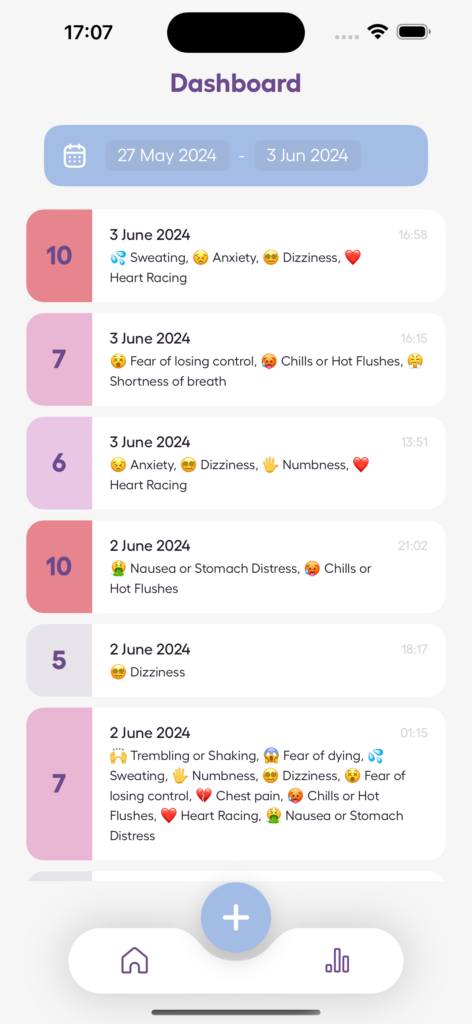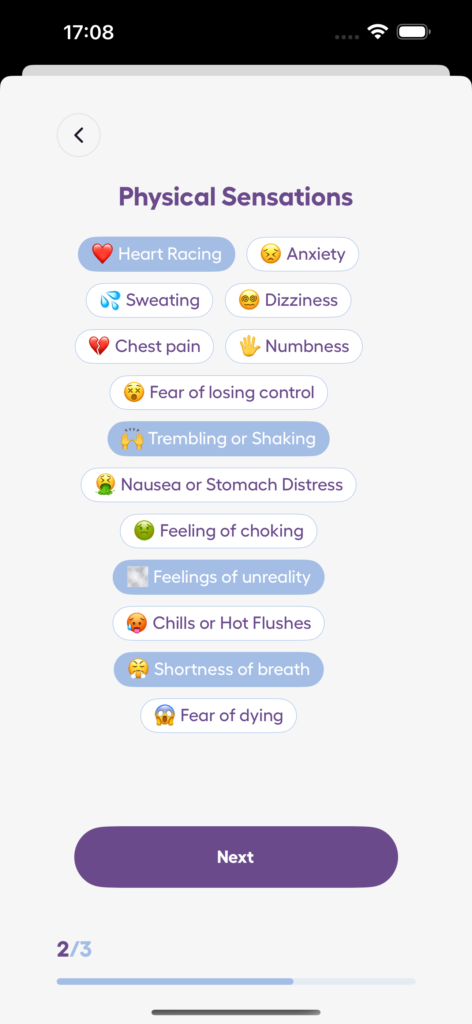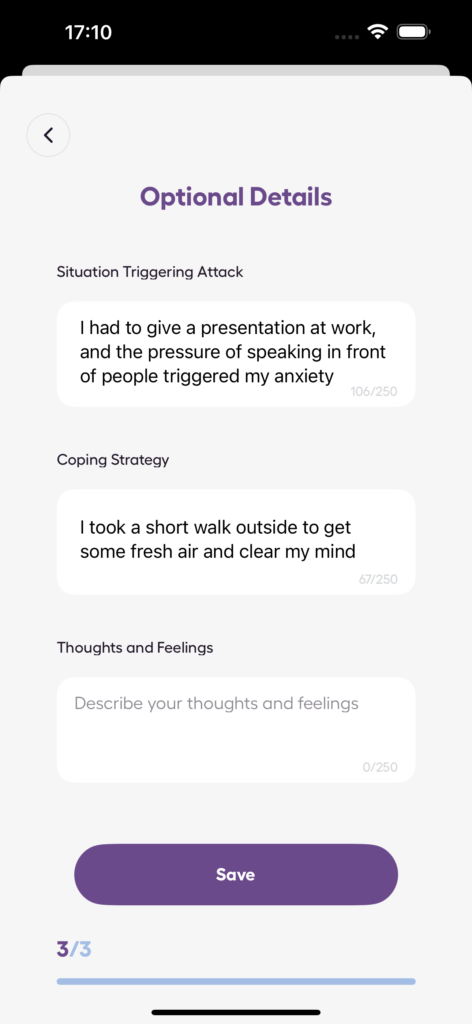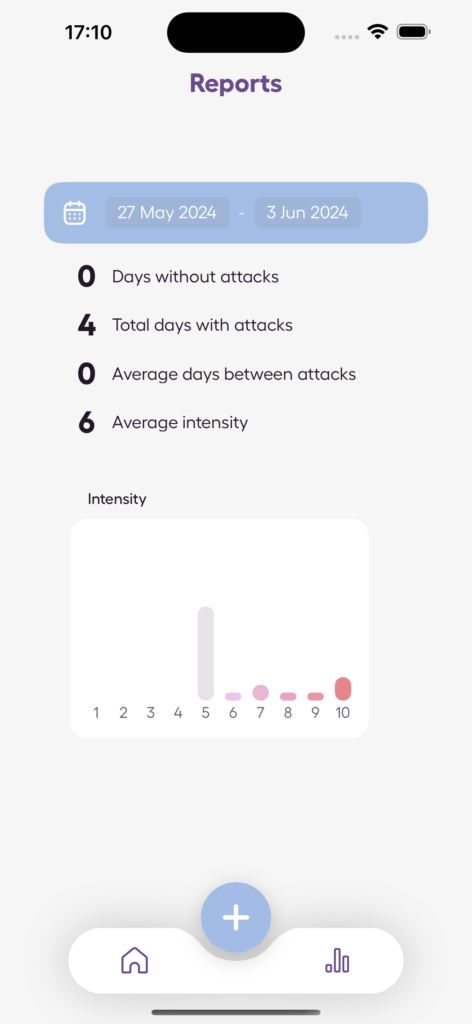CBT (Cognitive Behavioral Therapy) worksheets are practical tools to help you manage anxiety by identifying and addressing triggers. Here’s how they work:
- Track Triggers: Use worksheets to log anxiety episodes, including triggers, symptoms, and severity, to spot patterns.
- Understand the Cycle: Tools like ABC Analysis break down triggers, reactions, and outcomes to find areas for intervention.
- Challenge Negative Thoughts: Thought challenge worksheets help reframe unhelpful thinking into balanced perspectives.
- Monitor Progress: Combine tracking with tools like the GAD-7 or apps like Anxiety Journal for insights and progress tracking.
How to Start:
- Choose between paper or digital worksheets.
- Log daily triggers, thoughts, and coping strategies.
- Review weekly to adjust and improve your approach.
These worksheets make anxiety management actionable and measurable, helping you build personalized strategies over time.
CBT Anxiety Worksheets
What Are Anxiety Triggers?
Anxiety triggers are anything – whether physical sensations, thoughts, or behaviors – that can set off anxiety symptoms.
Common Types of Triggers
Triggers generally fit into four main categories [3]:
- Emotional triggers: Internal feelings or mood changes.
- Mental triggers: Ongoing worries or repetitive thoughts.
- Social triggers: Situations involving other people or social interactions.
- Physical triggers: Sensations in the body, like a racing heart or dizziness.
Up next, we’ll look at CBT worksheets that can help you identify and better understand these triggers.
CBT Worksheet Types
Trigger Tracking Sheets
These worksheets help you log details about your triggers, including the date, time, trigger description, symptoms, and the severity of your anxiety. By using them regularly, you can uncover patterns in your stress levels. For instance, you might notice increased anxiety during morning commutes or before important meetings. Recognizing these patterns can help you develop specific coping strategies tailored to those situations.
ABC Analysis Worksheets
This worksheet breaks down anxiety episodes into three parts: Antecedent (the trigger), Behavior (your emotional or physical reaction), and Consequence (the result). By mapping out these steps, you can better understand the full cycle of an anxiety episode and identify where to intervene. For example, if public speaking (A) causes avoidance (B) and leads to missed opportunities (C), you can work on addressing each phase.
Thought Challenge Worksheets
These worksheets are designed to help you analyze and reframe negative thoughts linked to your triggers. By questioning automatic negative thoughts and adopting more balanced perspectives, you can gradually develop healthier mental habits.
Up next, we’ll explore how to complete each of these worksheets effectively for the best results.
sbb-itb-b1dedcc
Using CBT Worksheets
Digital Tracking Tools
Beyond traditional paper worksheets, digital tools like the Anxiety Journal app make tracking more convenient and efficient. This app allows users to:
- Log panic attacks, anxiety episodes, stress levels, symptoms, triggers, thoughts, and coping strategies instantly
- Filter entries to identify patterns
- Access personalized insights through detailed analysis
- Review progress with reports and visual charts
- Utilize built-in tools like the GAD-7 and other standardized assessments
Combining CBT Worksheets with Other Methods
Worksheets are helpful, but combining them with other approaches can make anxiety management even more effective.
Changing Thought Patterns
Use your CBT worksheet entries to track anxiety episodes, triggers, and coping strategies. Weekly reviews of your ABC and thought-challenge worksheets can help you identify persistent negative beliefs. Share these findings with your therapist, or if you’re working independently, test out balanced alternatives whenever unhelpful thoughts come up.
Adding Relaxation Methods
Pair your worksheets with relaxation techniques like breathing exercises to ease both mental and physical symptoms. For example, box breathing involves inhaling, holding, exhaling, and holding again for 4 seconds each. If you’re using the Anxiety Journal app, its breathing tool can be a great addition when logging a trigger. Keep track of which techniques work best for you and build a personalized toolkit of coping strategies.
Monitoring Progress
To evaluate how well your strategies are working, combine regular worksheet reviews with standardized anxiety assessments like the GAD-7. By recording your scores alongside your worksheet reflections, you can:
- Track changes in anxiety levels before and after trying new techniques
- Identify which practices are most effective for specific triggers
- Adjust your management plan using objective data
The Anxiety Journal app can help by generating summaries of your entries, showing trends in charts, and preparing clear reports to share with your therapist.
| Method | Purpose | Integration with CBT Worksheets |
|---|---|---|
| Guided Breathing | Relieve physical symptoms quickly | Use during trigger logging |
| Standardized Assessments | Measure symptom changes over time | Record scores with worksheet reflections |
| Pattern Review & Challenge | Address negative thinking | Use worksheet data to reframe unhelpful thoughts |
Summary and Next Steps
Use CBT worksheets regularly to track your anxiety triggers, responses, and progress. Here’s how to get started and maintain the practice effectively:
- Set Up Your System: Decide between paper worksheets or a digital option like the Anxiety Journal app. Schedule two daily check-ins – one in the morning and one in the evening.
- Start Tracking: Log details for each episode, including the time, location, symptoms, thoughts, and your chosen coping strategy.
- Review and Adjust: Go over your entries weekly to identify patterns. Use tools like the GAD-7 monthly to measure progress and tweak your strategies as needed.









